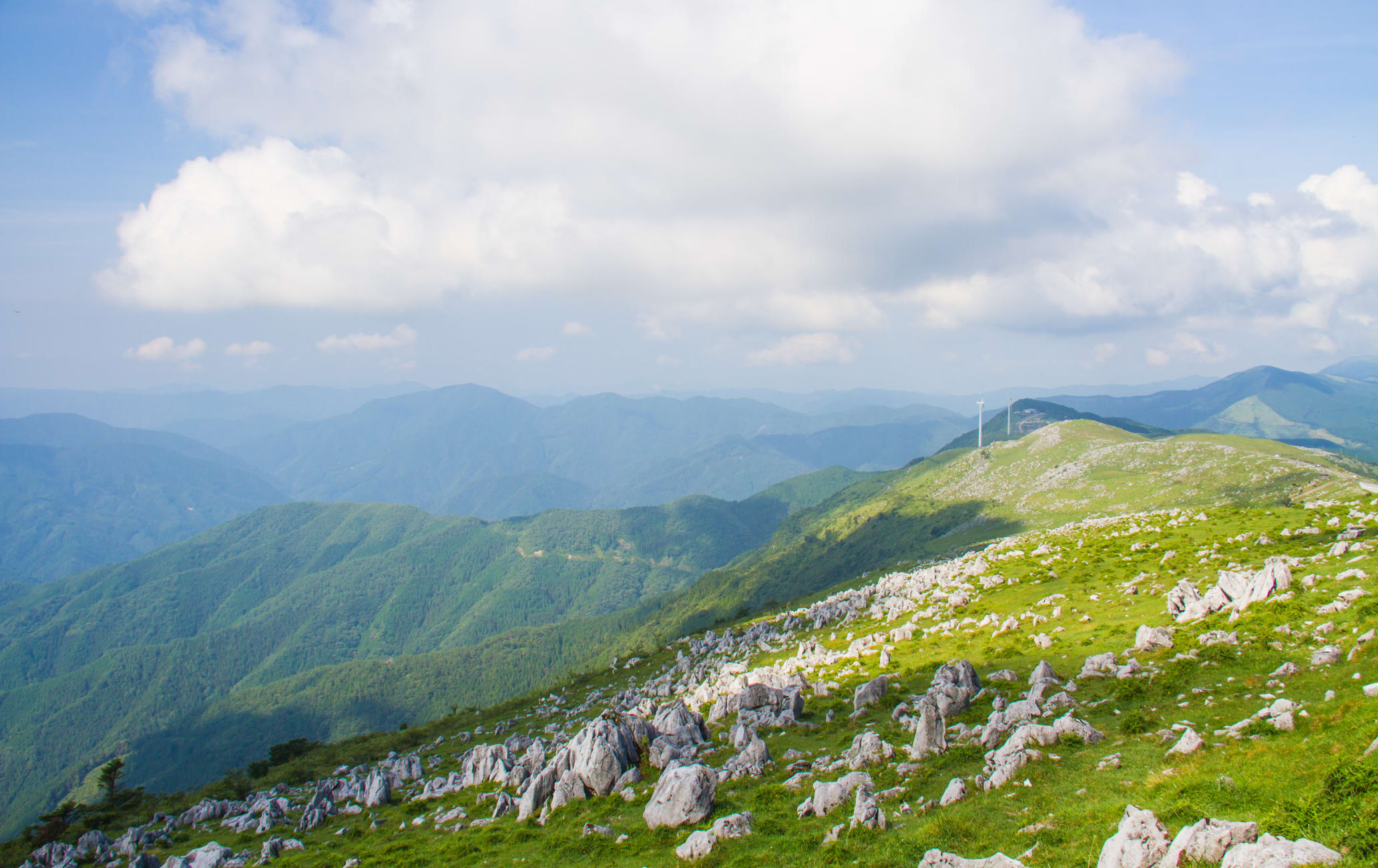Fascinating flora, fauna and rocky outcrops in deep Shikoku
To experience nature of a different kind, consider a visit to Shikoku Karst, a geological formation caused by the erosion of limestone hillsides. The sweeping grasslands of the area are scattered with white limestone mounds and conical sinkholes. The Karst extends along rolling mountains and has multiple trails with expansive panoramas of the Shikoku region and the Pacific Ocean.
Don't Miss
- The mossy trails and ancient trees of Keyakidaira
- Other-worldly stargazing opportunities
- Scenic hikes and stunning seasonal blooms
How to Get There
Hard to reach by public transport and therefore suited to intrepid travelers, this pristine natural hideout can be accessed by car from Kochi and Matsuyama or a combination of taxi, bus and train travel from Kochi Station.
If you choose to rent a car, the scenic drive from either Kochi or Matsuyama takes around two hours. The journey by public transport and taxi requires a number of changes.
To get there via public transport, depart from Kochi Station and arrive at Susaki Station to catch a bus towards Yusuhara. Change again at Shinden and take a taxi to Hoshifuru Village Tengu (formerly Tenguso), in the middle of the Karst. During the winter months, some areas of the Karst become inaccessible due to snow.
Quick Facts
The area is split into three parts; the Tengu Highland, Keyakidaira and Mezurudaira
The karst has an elevation of 1,400 meters
The area straddles both Ehime and Kochi prefectures
A place for all seasons
The Shikoku Karst transitions seamlessly with the seasons. Spring sees the grasses turn a vibrant hue of green. On hikes through the area in summer, you can see lilies all around. Old man of the mountain and forget-me-nots also dot the hillsides.
Rich, vibrant leaves cover the trees during fall months, whilst the grass turns a striking shade of silver. Then in the winter, you may find a dusting of the purest white snow covering the hillsides.


Forest bathing
The hiking trail in the Tengu Highlands that passes through Tengu Forest is a great way to soak up the area's incredible beauty. Look out for the Japanese cypress wood-chip paths meandering through the forest, which are surrounded by stunning white birch and red pine trees.
The walk takes approximately three hours and at the end of it, you are rewarded with fantastic views of the Shikoku mountains and on a clear day, the Pacific Ocean.
The great outdoors
During summer months, camping is the perfect way to immerse yourself in the tranquil atmosphere of the Karst. The Mezurudaira area has plenty of campsites where you'll find pastoral scenes of cows lazily grazing. The Karst is so far from any major cities there is little to no light pollution, making it the perfect spot to stargaze.
A riot of color
The nearby Ogawamine area includes several notable mountains. Kasatori, Ogawamine, Mikawamine, and Ubahodo all reach heights of between 900 and 1,500 meters. In spring, the mountains are carpeted with the bold magenta rhododendron flowers. On a clear day, you can see Mt. Ishizuchi and the Sata Peninsula nearby.
Warm hospitality
In the midst of the Karst's Highlands sits the Hoshifuru Village Tengu (formerly Tenguso) and Mezuruso Cottages. Taste the flavors of the mountains, such as pheasant and wild boar served alongside the best of seasonal produce.
Hoshifuru Village Tengu has a large bath which looks over the Pacific and the Ishizuchi mountains, and is the perfect place to unwind after a long day of hiking. At Mezuruso, try amago, a red spotted masu trout from the nearby rivers of Kumakogen, cooked on an outdoor charcoal fire. Both accommodations also have campsites.
Starlight, waterfalls and fairytale villages
Much like Shirakawa-go , the thatched farmhouse village of Kumakogen Furusato Ryoko Mura could have been lifted from a fairytale. The planetarium and observatory offer unimpeded views of the twinkling night skies. Nearby, Omogo Gorge and Goraiko and Gongen waterfalls draw visitors with their clear rippling waters and dense surrounding forest.

























































